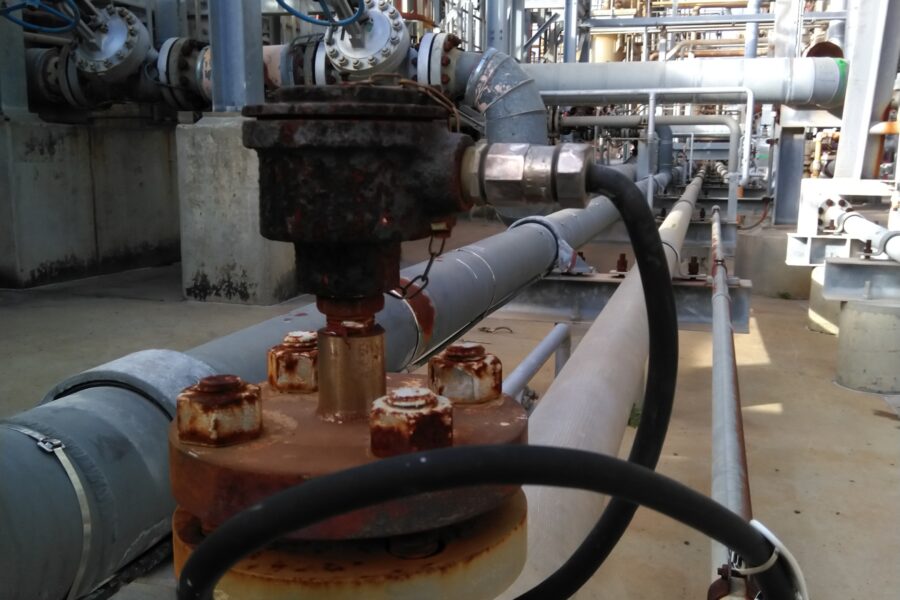An Unbiased View of Roar Solutions
An Unbiased View of Roar Solutions
Blog Article
Not known Details About Roar Solutions
Table of ContentsThe 10-Minute Rule for Roar SolutionsThe Definitive Guide to Roar Solutions4 Simple Techniques For Roar Solutions
In order to protect installments from a potential surge an approach of analysing and categorizing a possibly dangerous location is required. The purpose of this is to guarantee the appropriate choice and installation of devices to inevitably avoid an explosion and to ensure safety of life.
(https://www.imdb.com/user/ur192566418/?ref_=nv_usr_prof_2)
No devices ought to be set up where the surface area temperature level of the tools is above the ignition temperature level of the provided threat. Below are some typical dirt dangerous and their minimum ignition temperature. Coal Dirt 380C 225C Polythene 420C (melts) Methyl Cellulose 420C 320C Starch 460C 435C Flour 490C 340C Sugar 490C 460C Grain Dust 510C 300C Phenolic Material 530C > 450C Aluminium 590C > 450C PVC 700C > 450C Soot 810C 570C The chance of the risk being present in a concentration high sufficient to cause an ignition will vary from location to location.
Hazardous area electric equipment perhaps designed for use in higher ambient temperature levels. Field Repair By Authorised Employee: Challenging screening may not be required however certain procedures may require to be adhered to in order for the devices to keep its 3rd party ranking. Each item of tools with a hazardous rating need to be assessed separately.
The Best Strategy To Use For Roar Solutions
The tools register is an extensive data source of tools records that includes a minimum collection of fields to recognize each product's place, technical parameters, Ex-spouse classification, age, and ecological data. This details is important for tracking and taking care of the equipment effectively within harmful locations. In comparison, for periodic or RBI tasting examinations, the quality will be a combination of Comprehensive and Close examinations. The proportion of Comprehensive to Shut examinations will be figured out by the Tools Risk, which is evaluated based upon ignition risk (the likelihood of a source of ignition versus the likelihood of a combustible environment )and the harmful area classification
( Area 0, 1, or 2). This variant will certainly also influence the resourcing needs for work preparation. When Whole lots are defined, you can establish sampling plans based upon the example size of each Great deal, which describes the variety of arbitrary equipment things to be examined. To identify the called for example dimension, 2 elements need to be assessed: the dimension of the Lot and the group of assessment, which indicates the degree of effort that must be used( minimized, typical, or enhanced )to the evaluation of the Great deal. By combining the group of evaluation with the Whole lot size, you can then develop the suitable denial standards for a sample, indicating the permitted number of damaged products found within that example. For more information on this procedure, please refer to the Power Institute Guidelines. The IEC 60079 conventional suggests that the optimum period in between inspections ought to not exceed three years. EEHA examinations will certainly likewise be conducted beyond RBI projects as component of scheduled maintenance and tools overhauls or fixings. These assessments can be credited toward the RBI example sizes within the impacted Lots. EEHA inspections are conducted to recognize mistakes in electrical equipment. A weighted racking up system is necessary, as a solitary tool may have multiple mistakes, each with differing degrees of ignition risk. If the consolidated score of both assessments is much less than twice the fault rating, the Lot is considered appropriate. If the Whole lot is still taken into consideration undesirable, it needs to go through a complete evaluation or reason, which may trigger stricter examination methods. Accepted Lot: The sources of any kind of faults are recognized. If an usual failure mode is located, extra tools may require maintenance. Faults are categorized by intensity( Security, Integrity, Home cleaning ), ensuring that immediate issues are assessed and attended to quickly to alleviate any effect on safety and security or procedures. The EEHA database must track and tape the lifecycle of faults in addition to the corrective actions taken. Carrying out a durable Risk-Based Inspection( RBI )strategy is important for guaranteeing conformity and security in taking care of Electrical Devices in Hazardous Locations( EEHA) (electrical refresher course). Automated Fault Scoring and Lifecycle Monitoring: Easily take care of faults and track their lifecycle to enhance inspection accuracy. The introduction of this support for risk-based assessment better enhances Inspectivity's placement as a best-in-class service for regulatory compliance, in addition to for any kind of asset-centric evaluation use case. If you are interested in finding out more, we invite you to ask for a demonstration and find exactly how our remedy can transform your EEHA monitoring procedures.
The Only Guide to Roar Solutions

In regards to eruptive threat, a dangerous area is an atmosphere in which an explosive environment is existing (or may be anticipated to be present) in amounts that require unique safety measures for the building, setup and use devices. eeha training. In this write-up we explore the obstacles dealt with in the work environment, the threat control procedures, and the required expertises to work safely
It is an effect of contemporary life that we make, save or deal with a series of gases or fluids that are regarded combustible, and a variety of dirts that are regarded flammable. These substances can, in particular problems, develop eruptive environments and these can have major and awful consequences. Many of us know with the fire triangular eliminate any kind of among the three components and the fire can not happen, however what does this mean in the context of hazardous areas? When damaging this down right into its easiest terms it is essentially: a mix of a certain amount of launch or leak of a particular compound or product, blending with ambient oxygen, and the presence of a source of ignition.
In many instances, we can do little about the degrees of oxygen in the air, however we can have significant influence on resources of ignition, for instance electrical tools. Hazardous locations are recorded on the harmful location classification drawing and are eeha determined on-site by the triangular "EX-SPOUSE" indication. Here, among other crucial information, zones are split into 3 kinds relying on the risk, the likelihood and duration that an eruptive ambience will exist; Zone 0 or 20 is deemed the most hazardous and Zone 2 or 22 is deemed the least.
Report this page